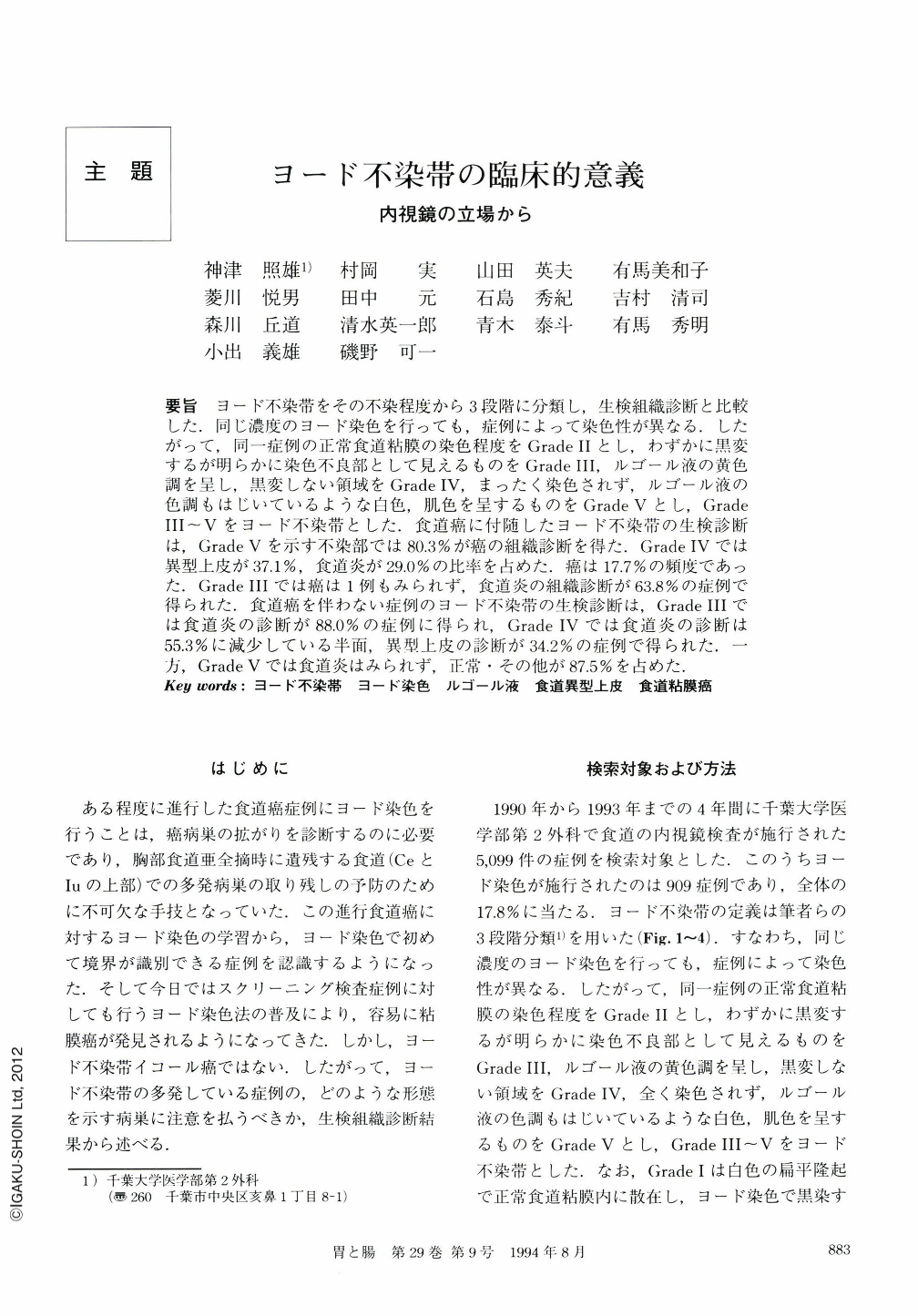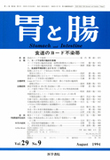Japanese
English
- 有料閲覧
- Abstract 文献概要
- 1ページ目 Look Inside
- サイト内被引用 Cited by
要旨 ヨード不染帯をその不染程度から3段階に分類し,生検組織診断と比較した.同じ濃度のヨード染色を行っても,症例によって染色性が異なる.したがって,同一症例の正常食道粘膜の染色程度をGrade Ⅱとし,わずかに黒変するが明らかに染色不良部として見えるものをGrade Ⅲ,ルゴール液の黄色調を呈し,黒変しない領域をGrade Ⅳ,まったく染色されず,ルゴール液の色調もはじいているような白色,肌色を呈するものをGrade Ⅴとし,GradeⅢ ~Ⅴをヨード不染帯とした.食道癌に付随したヨード不染帯の生検診断は,Grade Ⅴを示す不染部では80.3%が癌の組織診断を得た.Grade Ⅳでは異型上皮が37.1%,食道炎が29.0%の比率を占めた.癌は17.7%の頻度であった.Grade Ⅲでは癌は1例もみられず,食道炎の組織診断が63.8%の症例で得られた.食道癌を伴わない症例のヨード不染帯の生検診断は,Grade Ⅲでは食道炎の診断が88.0%の症例に得られ,Grade Ⅳでは食道炎の診断は55.3%に減少している半面,異型上皮の診断が34.2%の症例で得られた.一方,Grade Ⅴでは食道炎はみられず,正常・その他が87.5%を占めた.
Lugol staining method has made it possible to detect an esophageal mucosal cancer easily. The clinical meaning of this technique is that the abnormal part of the squamous mucosa of esophagus can easily be pointed out. This abnormal part is related to the lesser amount of glycogen stored in the cells. However, the non-staining area of the esophagus is not equal to a cancer lesion. Using the result of histopathological diagnosis, we present here which kind of non-stained lesion should be paid attention to. We classified the findings obtained by this method into five grades, Grades Ⅲ, Ⅳ and Ⅴ were non-staining areas. Lugol-stained degree is different case by case, so we classified the staining degree of the normal esophageal mucosa (Grade Ⅱ) as standard. Grade Ⅲ is a lesion slightly stained but obviously poorly stained, Grade Ⅳ is yellowish colored with lugol solution but not stained and Grade Ⅴ is completely non-stained, repelling lugol solution, and looks whitish Grade Ⅰ is strongly stained glycogenic acanthosis. Histopathological findings of nonstaining lesions in the cases accompanied with esophageal cancer showed that the incidence of cancer was 80.3% in Grade Ⅴ, 17.7% in Grade Ⅳ and no cancer in Grade Ⅲ. In Grade Ⅳ, dysplasia was 37.1% and esophagitis was 29.0%. In Grade Ⅲ, esophagitis was 63.8%. On the other hand in the cases not accompanied with esophageal cancer, esophagitis was 88.0% in Grade Ⅲ, 55.3% in Grade Ⅳ and dysplasia was 34.2% in Grade Ⅳ. In Grade Ⅴ, no esophagitis was found and 87.5% of it was normal.
When we discover a non-staining lesion, the important points are first to check the degree of staining then the extension and whether it's multiple or not.

Copyright © 1994, Igaku-Shoin Ltd. All rights reserved.


